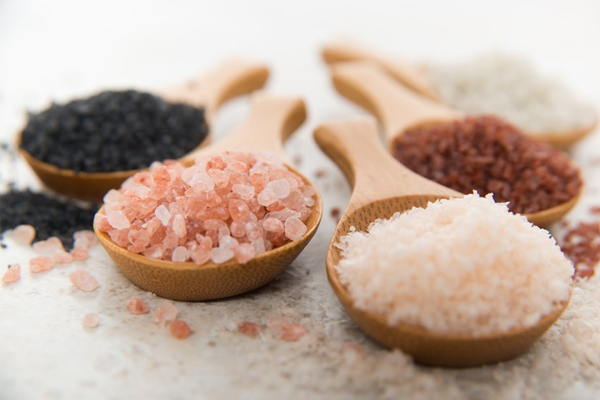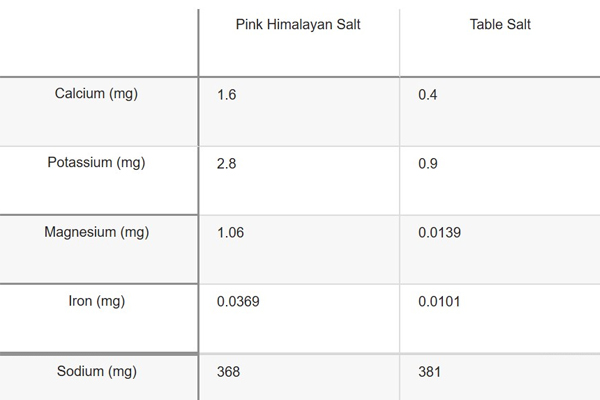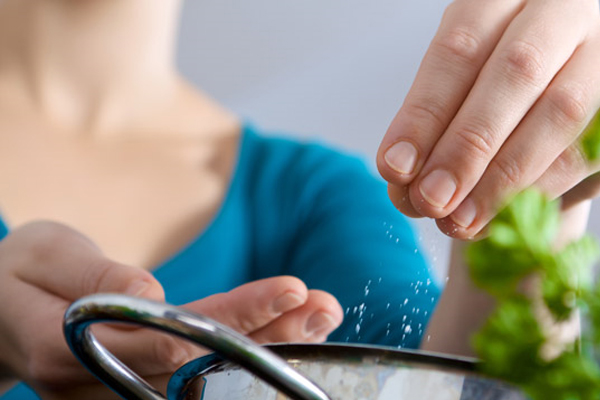I got asked the other day the following question, which I almost blew off before I did some more research about it. Thus, I wanted to share it with all of my subscribers:
“Dr. Sam – I have blood pressure problems and I was watching your videos about lowering it and so far, in the past 3 months, I’ve been able to get off of my blood pressure drugs by using your diet changes and supplement recommendations. However, I have a question about Himalayan Salt – I read that it’s toxic? Is this true? I thought it was natural and good for you and better than regular white table salt? I’m super confused. What do you say?”
Before I start with the Himalayan salt topic, I want to point out the fact that blood pressure problems are NOT caused by adding some salt to your foods. Salt isn’t even the primary cause of blood pressure problems – it’s more of a hormonal imbalance and aging thing.
I know this because my dad’s side of the family has blood pressure problems and because of this, I had to learn how to support healthy levels naturally. More about this later.
Himalayan Salt & Lead Poisoning?
In regards to Himalayan salt being toxic?… My first thought was, “no, it’s not. And anything in excess will be toxic, including water”.
However, before I replied back with a quick “no”, I decided to do some research.
And yup, I found a few articles stating that Himalayan salt is in fact, toxic. Or, it “could” be toxic due to higher levels of lead, which is a heavy metal and you don’t want this in your body.
Just to let you know, lead is a naturally occurring element found in your body, the environment, and in the foods we eat. Heck, it’s even in the air we breathe.1 But you just don’t want anything extra added if possible.
Anyway, the amount of lead in Himalayan Salt is very, very small. It’s nothing to be concerned about unless you’re having tablespoons full of it daily. In this case, you’ll have other health issues.

Now, I have Himalayan Salt daily – probably half a teaspoon full.
And these days, I have more Celtic Salt instead. It is slightly healthier. The only negative is that it’s a “wet” salt. So, you can’t put it in a salt shaker because it’ll stick to the walls and it won’t come out.
So, you just take a pinch and put it on your food.
Is It Healthier?
Now, a lot of people state how Himalayan salt is so healthy because it has about 84 trace minerals, including potassium, calcium, iodine, magnesium, iron, zinc, and others. Which sounds great…
However, the reality is that there are just very small amounts of these minerals, nothing that’ll make much of a difference in your life.2

As you can see, table salt may have more sodium, but pink Himalayan salt contains more calcium, potassium, magnesium, and iron.2
Again, amounts that are not worth even mentioning.
How Does It Compare To White Table Salt?
And since we’re speaking about regular white table salt, what are the main differences, pros, and cons as it compares to Himalayan Salt?
Honestly, the only real benefit to regular white salt is if you get the iodized version, which contains iodine. These days, many people are actually deficient in iodine, which is a shame since it has many benefits.
One of the main ones is improving thyroid function. Thus, if you are having a hard time losing weight and thus, may have a slower metabolism due to less thyroid production, taking iodine will help speed up your thyroid and increase the levels.

So, you can take it as an iodine supplement, eat more seaweed, or take iodized salt.
However, white salt does have extra additives you may not want, such as fluoride, which is a toxin. Also, anti-caking agents to prevent the grains from sticking together.
Remember how earlier I said how Celtic Salt is “wet” and sticks together, this is one reason – no anti-caking agents or additives.
And white salt does cost much less than Himalayan and Celtic salts.
Summary & Bottom Line
- Himalayan salt isn’t toxic, even though it has very low levels of a toxin called the lead.
- One of the biggest promoted benefits of Himalayan salt is that it contains about 84 trace minerals, but the levels are so low that there are no real benefits.
- White table salt does have two main benefits:
(A) it’s cheaper than Himalayan
(B) the iodized version is good for a slow thyroid because it contains iodine. - A big negative with white salt is that it contains additives that you don’t want – fluoride and anti-caking agents.
So go ahead and continue using Himalayan salt or do what I do – use Celtic Sea salt the majority of the time.
And don’t worry about the added salt raising your blood pressure. The majority of salt in your diet comes from packaged foods. The real cause of blood pressure problems is the change in your hormones due to aging.
You can get more details about supporting healthy blood pressure and still enjoying eating salt, by visiting the special link, where I reveal how my dad’s blood pressure got healthy in just a few days – no diet changes or drugs.
- Rolfes S., Pinna K, & Whitney E. Understanding Normal and Clinical Nutrition. Belmont, CA: Wadsworth Cengage Learning; 2012.
- https://onlinelibrary.wiley.com/doi/full/10.1111/j.1745-459X.2010.00317.x
